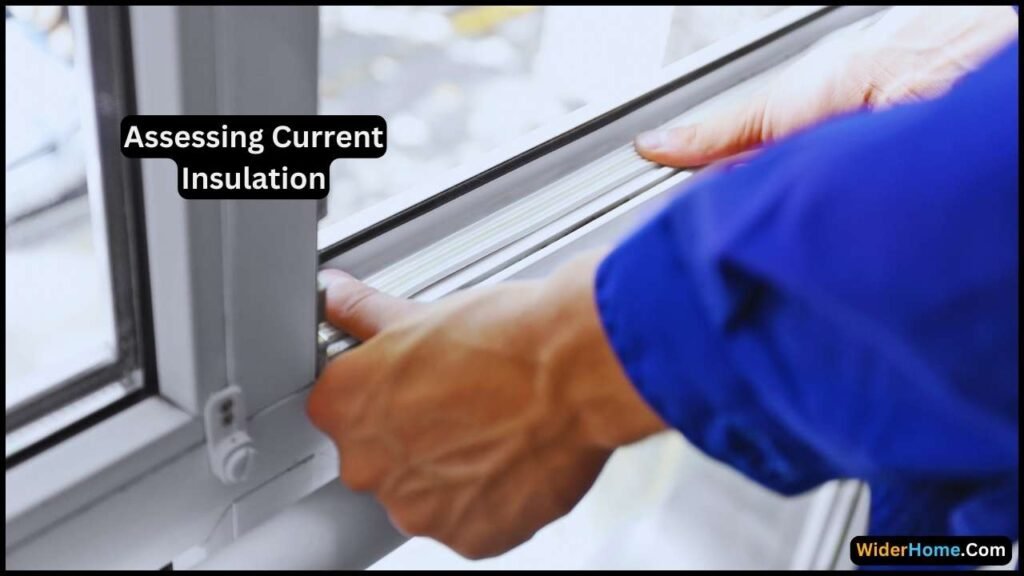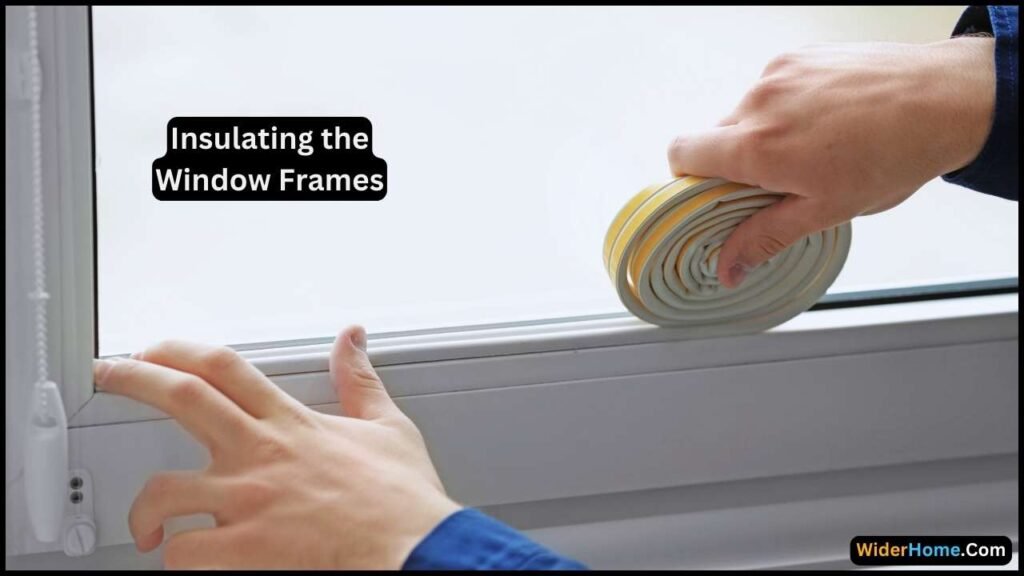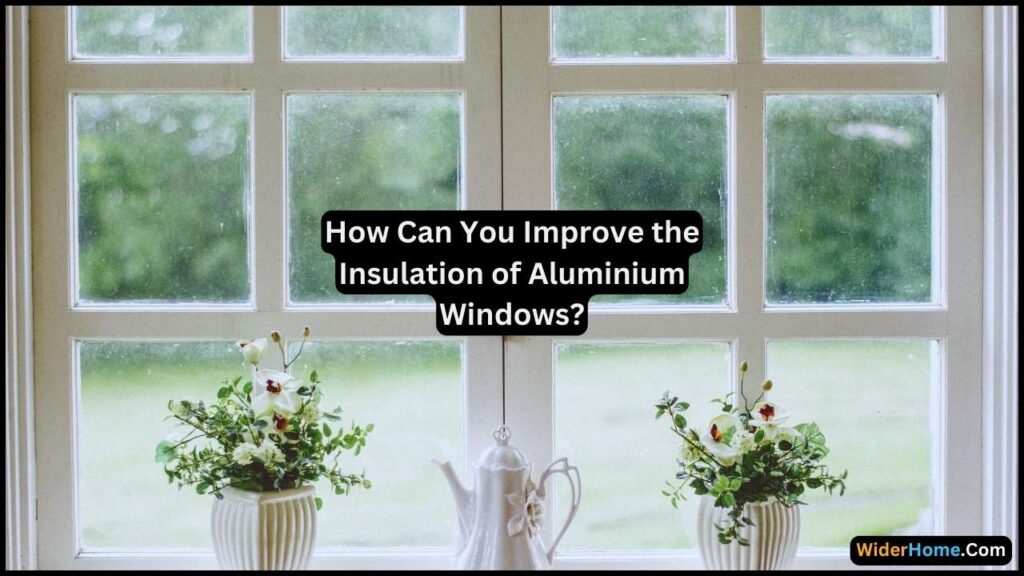How to Insulate Aluminum Window Frames?

Aluminum window frames have the potential to let in heat in the summer or cold air in the winter, which can increase energy costs and create discomfort in your house. It is crucial to insulate these frames since doing so contributes to a more consistent interior temperature.
By increasing insulation, you may have a more pleasant living area, save money on energy bills, and lessen outside noise. This article will cover adequately insulating aluminum window frames, increasing your house’s energy efficiency and comfort.
Tools and Materials Needed
You’ll need some essential tools and materials to insulate your aluminum window frames.
Tools
- Screwdriver: This tool helps you remove screws and fasteners holding parts together.
- Utility knife: You can use a sharp knife to cut materials like weather-stripping and foam insulation.
- Caulking gun: A device that helps you apply caulk smoothly to fill gaps and cracks.
- Measuring tape: A flexible tool that measures lengths accurately, ensuring you cut materials to the correct size.
Materials
- Weather-stripping: This is a strip of material that you place around the edges of windows to seal gaps and stop air from coming in or out.
- Foam insulation strips: Soft foam pieces that you can fit snugly into small spaces to provide extra insulation.
- Caulk (silicone or latex): A sticky material to fill gaps, ensuring your windows are sealed tight.
- Thermal window film (optional): A particular film you can place on your windows to help keep heat in during winter and out during summer.
Assessing Current Insulation

Assessing the insulation level in your aluminum window frames before beginning any insulation application is crucial. To prevent air from entering, you should first check the window frames for any openings or cracks.
Run your palm along the edges to check for a draft, or use a candle to see if the flame flickers. Next, determine which areas—especially where you can feel the chilly air or see the light coming through—need additional insulation.
Before installing the new materials, you must remove worn-out or broken weather-stripping or caulking. This will ensure that the insulation you add will be efficient and contribute to a more energy-efficient home.
How to Insulate Aluminum Window Frames

Insulating your aluminum window frames is a straightforward process that can make a big difference in how comfortable your home feels. Here’s how to do it step by step:
Applying Weather-stripping
Measuring the perimeter of the window: Start by measuring around the edges of your window to determine the amount of weather-stripping you’ll need. Use your measuring tape for accuracy.
Cutting weather-stripping to size: Once you have your measurements, take your utility knife and cut the weather-stripping so that it perfectly fits the sides of the window.
Installing weather-stripping along edges: Peel off the backing from the weather-stripping and press it firmly onto the edges of the window frame, ensuring no gaps where air can escape.
Adding Foam Insulation Strips
Selecting appropriate thickness: Choose foam insulation strips that fit the gaps you need to fill. They come in different thicknesses, so pick ones suitable for the space’s size.
Cutting foam to fit snugly in gaps: Use your utility knife to cut the foam strips to the correct lengths, ensuring they fit snugly in any open spaces around the window frame.
Firmly adhering foam to the frame: Press the foam strips into the gaps with enough force to ensure they stick well and don’t move around.
Sealing with Caulk
Choosing the right caulk for exterior/interior use: Pick one suitable for the area you are working on. Some caulks are better for outdoor use, while others work well indoors.
Applying caulk to any remaining gaps: Use your caulking gun to apply a smooth line to fill in any gaps still open after installing the weather-stripping and foam insulation.
Smoothing caulk for a neat finish: After applying it, you can smooth it out with your finger or a tool to make it look nice and to ensure it seals properly.
By following these simple steps for insulating the frames, you’ll help keep the temperature in your home more stable and save on energy bills.
How Can You Improve the Insulation of Aluminum Windows?

Once you’ve finished adding essential insulation to your aluminum window frames, consider making optional modifications to improve your house’s overall energy efficiency. These improvements offer further advantages, increasing your house’s comfort level.
Installing Thermal Window Film
You can add a unique layer to your windows called thermal window film. This film aids in temperature regulation by trapping heat inside during the winter and preventing heat from the outside during the summer. Additionally, this coating helps shield your furniture from UV rays fading and lessens glare from sunshine.
Adding Exterior Storm Windows
An additional beneficial addition is storm windows on the outside. These are extra windows you install outside the ones you already have to provide an additional defense against moisture and cold air. This additional insulation layer can lower external noise pollution and significantly increase energy savings.
Upgrading to Double or Triple Glazed Windows
Consider installing double or triple-glazed windows if you’re looking for a longer-term fix. These windows offer superior insulation because they have several glass layers with gas or air between them. They can raise home comfort levels and significantly lower energy expenses.
FAQs
What materials do I need to insulate aluminum window frames?
Proper caulking of aluminum window frames requires a caulking gun, measuring tape, caulk, foam insulation strips, weather-stripping, and a utility knife. By filling gaps, these components will increase energy savings.
How do I know if my aluminum windows need insulation?
Vapor on the glass, drafts around the frames, shifting interior temperatures, and higher energy costs indicate that your aluminum windows may need to be insulated. If you observe any of these problems, it may be time to upgrade your insulation.
Can I insulate my aluminum frames myself?
Yes, it is possible to do aluminum frame insulation yourself. Suppose you have the necessary supplies and equipment. In that case, you can enhance the insulation of your windows without hiring an expert. Just follow the instructions in this article.
How long does the insulation process take?
Insulating aluminum window frames might take several hours, depending on the number of windows and your experience. Accurate measurement and planning will help speed up the procedure.
Will insulating my windows eliminate all drafts?
Insulation lowers drafts and increases energy efficiency, although it might not wholly stop airflow. However, using the proper insulation techniques will significantly reduce unwelcome airflow and improve the comfort level in your house.
Are there any long-term benefits to insulating aluminum window frames?
Insulating aluminum window frames can result in long-term advantages, such as increased comfort, lower energy costs, and a longer window lifespan. If you can stop heat from escaping and entering, your interior climate will be more stable.
How do you insulate a metal window frame?
When insulating a metal window frame, begin by caulking any openings around the edges with foam insulation strips or weather-stripping. Drafts will be less frequent as a result. Next, use caulk to seal any gaps left and form a tight seal.
If you want more insulation, install external storm windows or apply thermal window film. These methods can lower energy bills while maintaining a comfortable home.
Conclusion
To sum up, insulating your aluminum window frames is a quick and straightforward method to reduce energy bills and improve the comfort level of your house. Fill in gaps and keep hot air out in the summer and warm air inside in the winter with materials like caulk, foam insulation, and weather-stripping. Consider installing storm windows, thermal window film, or upgrading to double or triple-glazed windows if you want even better results. By following these easy measures, you can keep your energy costs down, protect your property from the elements, and create a cozy living space.
Image credits: Canva
